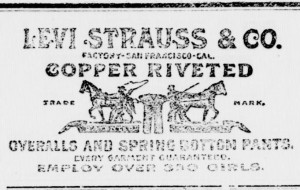Old newspapers have acquired an iffy reputation over the years. We bemoan the trees that had to die to bring them into existence for their one day of glory; we dub them “mullet-wrappers” or note, as they do in the British Isles, that “Yesterday’s news is tomorrow’s fish-and-chip paper.”
But old newspapers can be addictive! And if you’d like to find out just how, the Library of Congress and the National Endowment for the Humanities have a little something to show you – a website called “Chronicling America,” which recently digitized its 5 millionth old-newspaper page. It features 800 newspapers from 25 states.
Short of watching a well-assembled documentary, or a movie like “The Godfather” that re-creates another place and time in great detail, there’s nothing like an old newspaper to give you a dimensional sense of a past era.
Not only can you find out what was news in that city at that time; you also see advertisements that convey everything from the fashions of the day to the nostrums people took for their ailments – including maladies like “catarrh,” “ague” and “scrofula.”
You see changes in the way people absorbed information – a newspaper published in 1912, for example, might make no effort to separate its editorial positions from its news coverage, openly lacing its news with ridicule. Legitimate news sources moved away from that in the latter part of the 20th century.
And you can see how hot topics of the day cropped up in unexpected places. Here, for example, reported in the Fayette, Missouri “Boon’s Lick Times” in 1848,
we find the topic of extending slavery westward raised in a letter from U.S. Sen. Thomas Hart Benton to the denizens of California, just liberated from Mexico:
“The treaty with Mexico makes you citizens of the United States; Congress has not yet passed the laws to give you the blessings of our government; and it may be some time before it does so. In the mean time … The edicts promulgated by your temporary Governors (Kearny and Mason, each an ignoramus), so far as these edicts went to change the laws of the land, are null and void …
… you are apprised that the question of extending African slavery to California occupies, at present, the attention of our Congress. I know of nothing that you can do at this time that can influence the decision of that question here. When you become a state, the entire and absolute decision of it will be in your own hands. In your present condition … I would recommend total abstinence from the agitation of the question.”
Here’s another classic old newspaper, the “Tombstone Epitaph” of Tombstone, Ariz. We all know this as the locale of the shootout at the O.K. Corral – that was in 1881 – but what was it like in Tombstone as the 20th century was rounding the corner?
This edition of the paper – March 27, 1898 – has lead stories about the sinking of the U.S.S. Maine (prelude to the Spanish-American War) and ads for such remedies as Dr. King’s New Discovery for Consumption, Ely’s Cream Balm (cures colds, hay fever, headaches and deafness!) and S.M. Barrow’s One Price Cash Store, where you could buy anything from silk and dimity fabrics and “Buckingham & Heck’s Cowboy Boots” to “guns, pistols, and cartridges.” Also, you could book a trip to the Yukon to mine for gold.
Thar’s gold in them thar yellowing pages, too. And, because Chronicling America is digital, you can dive in from your desk or home computer. No trees – no more trees, anyway — were harmed in the making of this website.

